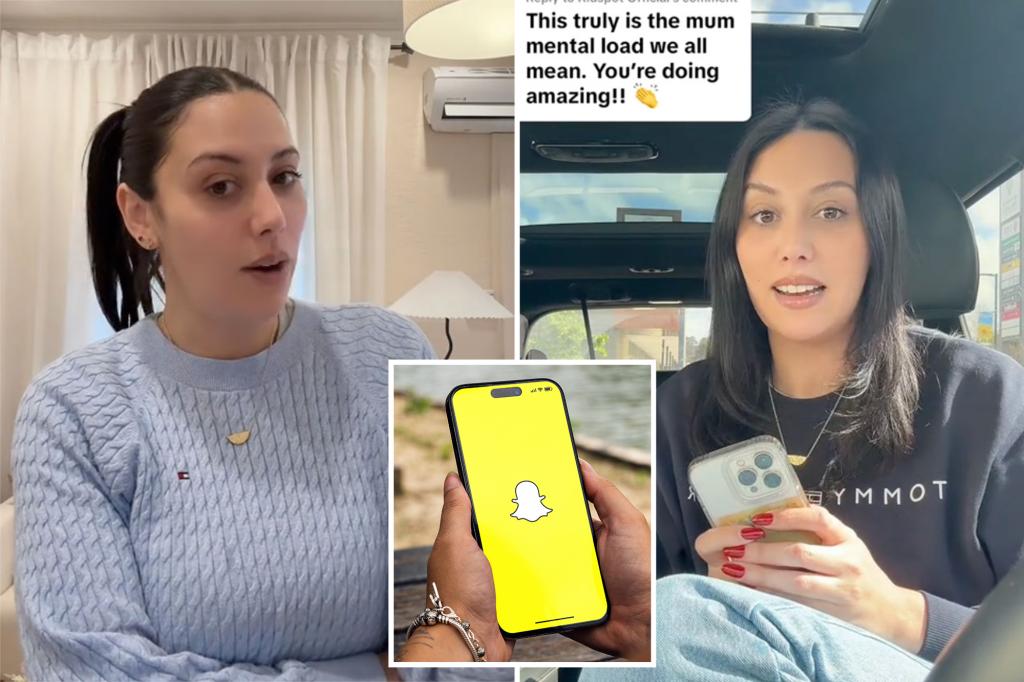The Modern Parent’s Guide to Teen Social Media: One Mom’s Snapchat Adventure
In the ever-evolving landscape of parenting, nothing quite prepares you for the moment your teenager hands you their smartphone with an unexpected mission. This was Eliza’s reality when her 15-year-old daughter left for school camp and casually tasked her with what seemed like a simple request: “Keep my streaks alive, Mom.” What followed was a crash course in teen social media culture that revealed as much about modern adolescence as it did about the trust between this mother and daughter. “I don’t think that I expected that was going to be on one of my task lists,” Eliza told Kidspot, highlighting how parenting constantly throws curveballs no manual could prepare you for. The seemingly trivial task of maintaining Snapchat streaks—consecutive days of exchanging snaps with friends—quickly revealed itself to be serious business in teen social circles, something Eliza described as “the world’s most silly thing to be important.”
What initially seemed straightforward rapidly transformed into a high-stakes responsibility as Eliza learned the nuances of Snapchat’s streak system. She discovered that the appearance of a small hourglass emoji signaled danger—a streak on the verge of extinction. With clear instructions to check the app once in the morning and once in the afternoon, Eliza embraced her role as what she called a “streak lifeguard,” patrolling the digital waters for signs of trouble. She documented her journey on TikTok through what she playfully dubbed “mom cam,” sharing glimpses into this unexpected maternal duty. The learning curve wasn’t without mishaps, however. In one notable blunder, Eliza accidentally sent a photo of her positive flu test with the caption “Uh oh, mum’s going down” to a group chat rather than to an individual streak recipient. Her daughter’s boyfriend quickly messaged her with urgent instructions to delete it, concerned about the potential damage to her daughter’s “street cred.” Despite such missteps, Eliza’s efforts earned her surprising acclaim from her daughter’s friends, who praised her with comments like “you’re doing a great job” and “Queen Eliza.”
Perhaps the most meaningful aspect of this social media adventure wasn’t about the streaks themselves but the trust they represented. Eliza recognized the significance of being entrusted with her daughter’s digital social life, noting, “If I really wanted to, I could probably go through every single one of her messages or social media things, but I haven’t. I think it’s important to make sure that you’re still respecting their privacy.” This respect for boundaries didn’t develop overnight but was built on years of thoughtful parenting. Eliza explained that they had established clear rules from the beginning, not allowing her daughter to create a Snapchat account until she turned 13, despite many of her friends having accounts at younger ages. The primary rule was straightforward: only connect with people you know in real life. While Eliza acknowledges that boundary “has probably blown out a little bit” over time, she credits her daughter’s generally rule-following nature for the strong foundation of trust they’ve established.
During her time as a Snapchat surrogate, Eliza made fascinating observations about how today’s teens use social media compared to her own generation. “They don’t really say much in their snaps,” she noted, describing how most exchanges featured casual, unposed images showing “half their face, their shoulder, or whatever they happen to be looking at.” This casual approach struck her as remarkably different from her own teenage experience with social platforms. “We cared a lot more about how we looked as far as like our physical appearance. These guys don’t have to be wearing makeup… They don’t look aesthetic… They don’t have to be posing or making a big deal out of anything. It’s literally they’re just very candid and in the moment,” she reflected. This observation highlights a potential positive shift in how younger generations approach self-presentation online, seemingly less concerned with perfection and more focused on authentic, in-the-moment connection.
What began as an unusual favor revealed deeper insights into both the digital landscape teens navigate and the evolving nature of the parent-teen relationship. Throughout her temporary role as streak-keeper, Eliza encountered no concerning interactions or red flags among her daughter’s contacts, finding that most were simply friends of friends engaging in casual, everyday communication. This experience reinforced her confidence in the boundaries they had established together and in her daughter’s judgment. The absence of worrying content, despite Snapchat’s reputation as a platform difficult for parents to monitor, speaks to the foundation of trust they’ve built. Eliza credits this not to her own parenting but to her daughter’s character: “Honestly, I think it says more about her than it says about me.” This moment of recognition—seeing her teenager as a responsible individual making generally good choices—represents one of the most rewarding aspects of parenting adolescents.
For other parents who might find themselves tasked with similar Snapchat babysitting duties, Eliza offers practical advice based on her experience. “Definitely listen to the guidance that your child has given you as far as what’s acceptable and unacceptable,” she advises, acknowledging that teens have their own social norms that parents should respect rather than override. She also encourages parents not to “overthink it too much” and to “just have fun with it,” suggesting that simple, random moments from daily life make perfectly acceptable content for maintaining streaks. The content itself, she discovered, matters far less than the consistent connection it represents. As parenting in the digital age continues to present new challenges, Eliza’s experience highlights how these moments can become unexpected opportunities to better understand our teenagers’ worlds and strengthen the bonds of trust between generations. In 2025, being a good parent sometimes means less “What’s for dinner?” and more “Don’t let the hourglass appear”—and that’s perfectly okay.


